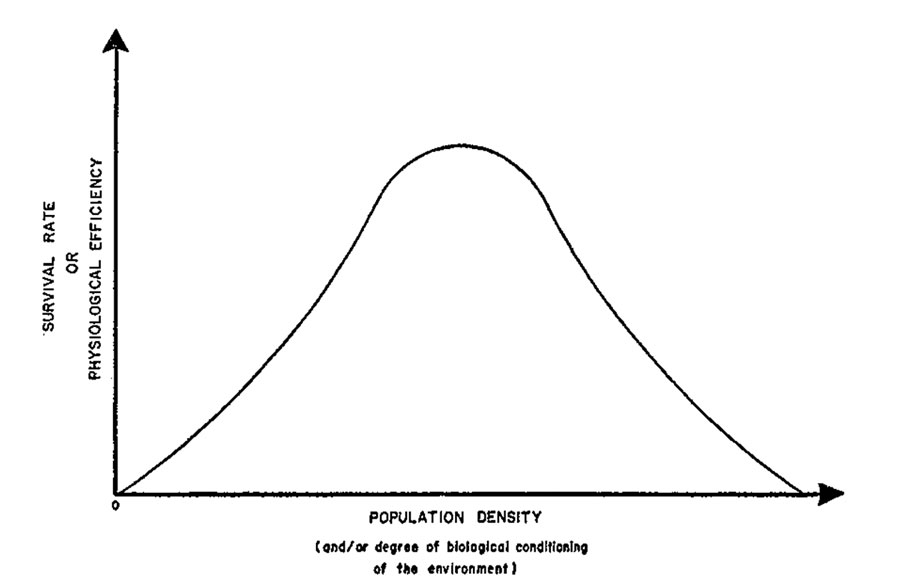
That last step of a comparison with people seems to have dropped out in review of this work back in the 70s and 80s, but that probably relates mostly to me only reading and citing some earlier content. It's probably as well to let that medium length summary cover the findings from this basic framing, and then correct errors (as I interpret them), and condense that down to a clear set of simple findings, to work with in extension to compare to human social trends.

I won't go into the details of the experiment set-up, how the zones were constructed, what the animals were fed, how initial subjects were selected, and so on all of that is in the summary papers. Earlier on he had been working with rats and changed that to mice, so by the time of "Universe 25" he was dealing with mice populations instead. Even his own interpretation is worth keeping separate from the actual findings details, noting what seems to be clearly identified facts (breeding population numbers, behavior patterns) from cause and effect sequences, why the rats and mice were doing what they were doing. In a sense what he initially expected doesn't matter, versus what he later found out through results. It's hard to separate why he started doing this, what the original goals were, from later positioning and research direction, on to what he had already discovered and was looking to clarify. It may be hard to clearly identify that cut-off, even though I'll try to make it explicit. Some of what I've seen in summaries seems clearly wrong, and I'll speculate beyond what the original researcher concluded. I would recommend that anyone who finds this theme as interesting as I do doesn't take my summary and conclusions as accurate, reviewing his take as well. I'll add links to two separate research papers by him, and one multiple-part video interview. If I'm remembering correctly Calhoun anticipated a relatively high population would develop relatively quickly, about as fast as normal breeding timing allowed for, and the results didn't match that. The idea was to set up rat or mice "utopias," isolated living conditions where they had ample food, shelter, safety, and separated living areas to see what the forms or stages of their breeding and behavior would be, as their population naturally increased. The "Universe 25" part relates to one experiment trial, obviously enough the 25th in a series. links to modern trends, especially related to social media trends and groups overview of the experiments (focusing mainly on one set of findings)ĥ. Then on to comments about how I see the mice and rat findings relating to current social trends, which play out in the most obvious fashion in social media use patterns and social groups.ġ. I'll pass on a short summary of what I see as the overview, then cite a summary I ran across that offers a somewhat abbreviated and highly interpreted version, then comments on what doesn't seem right in that. There's a lot to get through, and I have a number of comments on how I see it potentially relating to what we experience today, so I'll need to keep this moving. I've just ran across a really interesting summary of some social structure oriented experiments on mice by a researcher in the late 60s through the 70s, John Calhoun's rat and mice experiments related to the effects of overpopulation. Indoor baseball game: Farraguts vs.This is the third post in a row branching off the subject of tea, which I will get back to.

The Babes in the Wood: Robin Hood and His Merry, Merry MenĬhristmas entertainment and organ recital Policemen’s Benevolent Association Benefit: The Mikado Order of the Chosen Friends 11th AnniversaryĬhicago Charity Hospital Benefit: Cinderella United German Singing Societies of ChicagoĬhicago Oratorio Society 2nd Grand Concert Union League Club Washington’s Birthday Celebration

Illinois Masonic Orphans’ Home Charity Ball This list is not complete! Have a correction or a show to add to our master list? Know the name of an opening band or have a cool story to share from one of our shows? Drop us a line at.


 0 kommentar(er)
0 kommentar(er)
